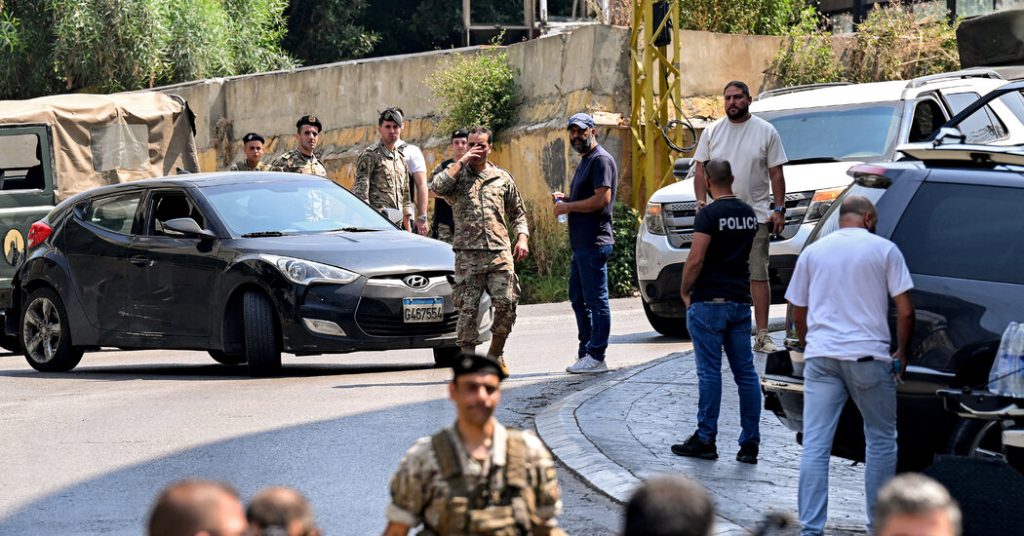A gunman opened fire on the U.S. Embassy in Lebanon, injuring a security guard in the early hours of Wednesday morning. The embassy confirmed that all staff members were safe. The Lebanese Army and the embassy’s security team quickly responded to the incident and exchanged fire with the attacker. The army stated that the gunman was a Syrian national and had been wounded before being taken into custody and hospitalized. Reports from witnesses indicated that there was a prolonged gunfight before the gunman was apprehended. Lebanese Prime Minister Najib Mikati reassured the public that the situation was under control following the attack.
This was not the first time the U.S. Embassy in Lebanon had been targeted. In September, another gunman had fired on the compound, but no one was injured in that incident and the attacker was arrested. In October, protesters clashed with security forces near the embassy while demonstrating against a deadly explosion at a hospital in Gaza. The U.S. Embassy had moved from central Beirut to the suburb of Awkar after a suicide bombing in 1983 that killed 63 people. The attack was attributed to Hezbollah, a Lebanese militant group now involved in conflicts with Israeli forces along the border. The incident highlights the ongoing security challenges faced by the embassy and diplomatic missions in the region.
The attacker’s motive for targeting the U.S. Embassy in Lebanon remains unclear. Investigations are ongoing to determine if the gunman acted alone or was part of a larger group or organization. The Lebanese security forces have concluded a search of the area surrounding the embassy. The incident underscores the importance of maintaining robust security measures at diplomatic missions and the need for close coordination between local security forces and embassy staff to respond effectively to such threats. The safety and security of diplomatic personnel and facilities are a top priority for governments and international organizations operating in high-risk environments.
The U.S. Embassy in Lebanon plays a crucial role in diplomatic relations between the United States and Lebanon. It serves as a key hub for advancing cooperation on various issues such as security, economic development, and humanitarian aid. The embassy’s relocation to the suburb of Awkar was prompted by previous security threats in central Beirut. The presence of diplomatic missions in conflict-prone regions poses unique challenges and requires constant vigilance to prevent and respond to security incidents. The U.S. government is likely to review its security protocols and procedures in light of the recent attack on its embassy in Lebanon.
The incident at the U.S. Embassy in Lebanon has raised concerns about the threat of violence targeting diplomatic missions in the region. The safety of embassy personnel and the security of embassy facilities are paramount considerations for governments and international organizations. The Lebanese government has pledged to enhance security measures to prevent future attacks on diplomatic missions. The incident underscores the need for continued cooperation and information-sharing between countries to mitigate security risks in volatile regions. The U.S. Embassy in Lebanon will likely review its security posture and adjust its protocols to ensure the safety of its staff and visitors in light of the recent attack.
The swift response by Lebanese security forces and the embassy’s security team helped contain the situation and prevent further harm. The injured security guard is receiving medical treatment, and efforts are underway to determine the motive behind the attack and identify any potential accomplices. The incident serves as a reminder of the persistent security threats faced by diplomatic missions in conflict-affected regions and the importance of maintaining robust security measures. The U.S. government is closely monitoring the situation and providing support to ensure the safety of its personnel in Lebanon. The incident highlights the need for continued vigilance and coordination among governments and security agencies to address security challenges in high-risk environments.


